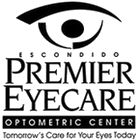And the mask winner is....
Congratulations Kellen fro graduating Vision Therapy! He is know able to read for hours comfortably! Way to go!!!
https://www.aarp.org/health/conditions-treatments/info-2020/eyewear-face-masks.html?cmp=SNO-ICM-FB-COVID-HLTH&socialid=3298673188
AARP.ORG
How to Avoid Foggy Eyeglasses When Wearing a Face Mask
Changes in vision can actually be a sign of a stroke, as this young woman learned first-hand. If you're concerned about any changes in your vision, let us know — we're here to help.
RD.COM
My "Vision Trouble" Turned Out to Be a Sign of Stroke—But I Ignored It
Do you know which famous football player believes vision therapy is one of the keys to his success?
Myopia control can help your child to overcome challenges in school. Myopia control involves methods to reduce the progression of your child's myopia, ensuring better vision and performance in school. Schedule an appointment now!
https://www.womeninoptometry.com/1-minute-tips/article/10-signs-your-struggling-student-may-have-a-functional-vision-problem/?utm_content=141292532&utm_medium=social&utm_source=facebook&hss_channel=fbp-79251914096&fbclid=IwAR3ToaHXLIKa7KCuan6yHcJQ1-Zw5NT7GBQYnCuO07sZEDXDGL6Png4GJDQ
WOMENINOPTOMETRY.COM
10 Signs Your Struggling Student May Have a Functional Vision Problem | Women In Optometry
Joe Gutcher
August 25 at 4:39 PM ·
Here are some simple tips I put together for limiting visual strain during distance education:
10-Tips for
Limiting Visual Strain
During Distance Education
Follow the 20/20/20-rule: look away from your screen for 20-seconds, 20-feet (approx.) into the distance, every 20-minutes (make a timer on your phone). If the room you are in is a small room, and you don’t have a window, look to highest/furthest corner of your room.
Position yourself so you are not facing direct light (window).
Position yourself so you are facing a plain background with minimal visual distractions.
If also engaged with hard copy, use a slanted surface (3-ring binder works), and have light directly face the item you are looking at (task lighting).
Adjust the brightness setting on your device: light can affect your vision just as much as size. Consider trying white symbols on a black background if you are really bothered by glare.
Go into your settings and increase the spacing between words and lines.
Use a larger font size; 16-24 works best for most people.
Change the font style to something that is easily legible: Arial, Helvetica, Comic-Sans, Calibri
If you have the option of reading something in print instead of on a screen (a novel for example), spend at least some of your time engaged with regular print.
At some point during your day, engage in activities that rely predominantly on senses other than your vision: chores, getting outside (when the air is better), listening activities, board games, exercise, cooking, etc.
Joe Gutcher-MS
TVI/O&M
Here are some simple tips I put together for limiting visual strain during distance education:
10-Tips for
Limiting Visual Strain
During Distance Education
Follow the 20/20/20-rule: look away from your screen for 20-seconds, 20-feet (approx.) into the distance, every 20-minutes (make a timer on your phone). If the room you are in is a small room, and you don’t have a window, look to highest/furthest corner of your room.
Position yourself so you are not facing direct light (window).
Position yourself so you are facing a plain background with minimal visual distractions.
If also engaged with hard copy, use a slanted surface (3-ring binder works), and have light directly face the item you are looking at (task lighting).
Adjust the brightness setting on your device: light can affect your vision just as much as size. Consider trying white symbols on a black background if you are really bothered by glare.
Go into your settings and increase the spacing between words and lines.
Use a larger font size; 16-24 works best for most people.
Change the font style to something that is easily legible: Arial, Helvetica, Comic-Sans, Calibri
If you have the option of reading something in print instead of on a screen (a novel for example), spend at least some of your time engaged with regular print.
At some point during your day, engage in activities that rely predominantly on senses other than your vision: chores, getting outside (when the air is better), listening activities, board games, exercise, cooking, etc.
Joe Gutcher-MS
TVI/O&M
Merry Christmas!


